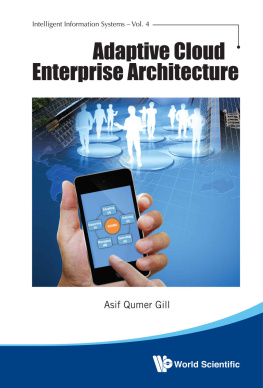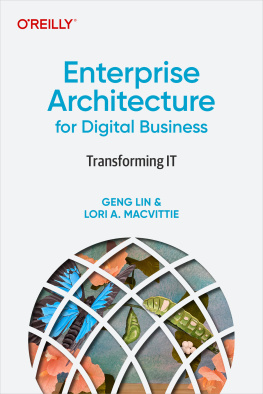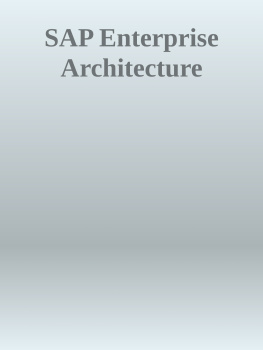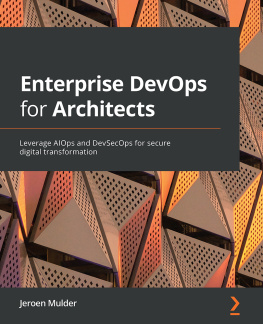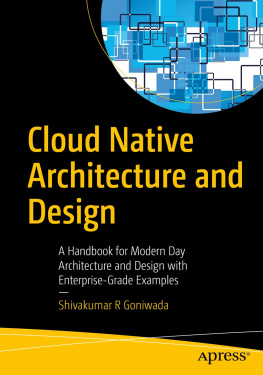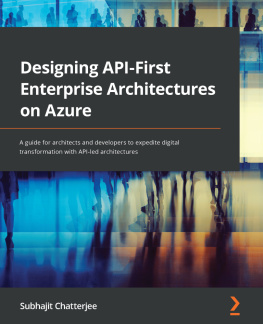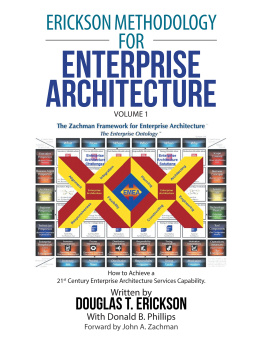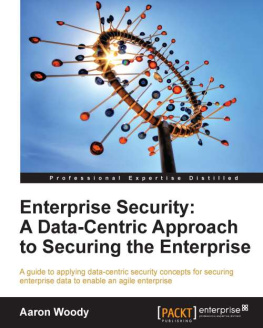
Adaptive Cloud Enterprise Architecture

INTELLIGENT INFORMATION SYSTEMS
Series Editors: Da Ruan (Belgian Nuclear Research Centre (SCK.CEN) & Ghent University, Belgium)
Jie Lu (University of Technology, Sdyney, Australia)
Published
Vol. 1 | Advances in Artificial Intelligence for Privacy Protection and Security
edited by Agusti Solanas & Antoni Martnez-Ballest (Rovira i Virgili University, Spain) |
Vol. 2 | E-Business in the 21st Century: Realities, Challenges and Outlook
by Jun Xu (Southern Cross University, Australia) & Mohammed Quaddus (Curtin University of Technology, Australia) |
Vol. 3 | Reasoning about Fuzzy Temporal and Spatial Information from the Web
by Steven Schockaert (Ghent University, Belgium), Martine De Cock (Ghent University, Belgium) & Etienne Kerre (Ghent University, Belgium) |
Vol. 4 | Adaptive Cloud Enterprise Architecture
by Asif Qumer Gill (University of Technology, Australia) |

Adaptive Cloud Enterprise Architecture

Asif Qumer Gill
University of Technology, Australia

Published by
World Scientific Publishing Co. Pte. Ltd.
5 Toh Tuck Link, Singapore 596224
USA office: 27 Warren Street, Suite 401-402, Hackensack, NJ 07601
UK office: 57 Shelton Street, Covent Garden, London WC2H 9HE
British Library Cataloguing-in-Publication Data
A catalogue record for this book is available from the British Library.
The author is the inventor and owner of The Gill Frameowrk copyright.
Intelligent Information Systems Vol. 4
ADAPTIVE CLOUD ENTERPRISE ARCHITECTURE
Copyright 2015 by World Scientific Publishing Co. Pte. Ltd.
All rights reserved. This book, or parts thereof, may not be reproduced in any form or by any means, electronic or mechanical, including photocopying, recording or any information storage and retrieval system now known or to be invented, without written permission from the publisher.
For photocopying of material in this volume, please pay a copying fee through the Copyright Clearance Center, Inc., 222 Rosewood Drive, Danvers, MA 01923, USA. In this case permission to photocopy is not required from the publisher.
ISBN 978-981-4632-12-6
Printed in Singapore
To my lovely family.
Endorsements for the Book
Mass movement to digital business and cloud computing is changing the way businesses and government adapt to digital disruptive forces. Emerging trends now show 40% of the IT budget being spent by the business. New digital leadership is required to meet head-on the challenges of convergence of services in highly integrated as-a-service landscapes. We are starting to notice the transformative nature of cloud and digital business impacting both the supply side and demand side of the IT services marketplace. In this heightened period of change adaptive is the new black. Adaptive sourcing is already emerging as a key to market services. Being agile and flexible is a business adaptive imperative. Defining business and IT strategies and roadmaps for cloud and digital business requires new adaptive thinking and frameworks. The Gill Framework addresses this emerging niche with the Adaptive Enterprise Services System (AESS), a systems-of-systems framework. What sets the AESS framework apart from others is the practical application of the Adapting, Defining, Operating, Managing, Supporting (ADOMS) life-cycle management approach. Adapting to change, as a result of pressures of digital business and cloud, requires a new response with new capabilities around agile. This book is a body of knowledge which is a must have handbook for adaptive business and IT thinkers and leaders.
Dr. Pedro Harris
Executive Director, ICT Strategic Delivery
Department of Treasury, Office of Finance and Services, NSW
Going digital is far more than the App or the web portal or the social media channel, its the ability to realise effective business presence, the ability to stay obsessively close to the customer and the ability to swiftly adapt and innovate both in the physical and digital worlds. Its about both your mission systems that delivers your organizations purpose and your support systems that enable its existence. It is also about being able to innovate and adapt these systems to remain competitive or to gain that edge over the competition. Enterprise architecture is about realising organisational strategy through deliberate design, assembly and change of all elements of the enterprise. Just like an architect designing a building for a particular purpose, an architecture will ensure that the emergent property or competitive advantage desired by designing your business in a certain way will emerge from your investments in change. This book provides a playbook for the architectures and critical considerations to designing and embedding desired properties required into your business through cloud and other digital enabling technologies. Asifs book is a must read for digital leaders embarking on digital transformation and to an adaptable cloud enabled enterprise.
Christopher Organ
CTO, HAMB Systems
Asif has produced an insightful and thought-provoking look at how we might better structure and run our organisations to create predictable outcomes and greater responsiveness in what is a challenging period of technology-driven change. It gives us the conceptual glue that can be used to join the myriad of frameworks and approaches together without the need for radical change within each of those disciplines.
Darryl Carr
EA Specialism Advisory Group, ACS
Demystification of the cloud and clarification of its critical role in business. This book is a must read for anyone involved in business architecture, technology decision-making, or wanting to understand the paradigm technological shift underway and how the accelerating rate of change in business is being enabled. Asifs book provides a comprehensive perspective of enabling architecture and technology driving digital disruption, which all organisations will be required to adopt. Asifs framework provides a meaningful foundation for the development of appropriate strategy, governance and planning to gain traction in this complex and rapidly evolving environment. The cost of not implementing such a framework is not optional.
Dr. Alex Kokkonen
Global executive, author, researcher, and motivational speaker
The future of many organizations is dependent on their ability to have a vision and more importantly the ability to transform the organization towards that vision. As such, a number of Enterprise Architectural frameworks have been introduced, however these frameworks have challenges. Asif states in this book, Traditional top-down approaches to enterprise architecture development and management are continuously challenged by the dynamic business environment. Enterprises are lagging behind in harvesting agile or adaptive enterprise architecture capability. The applications of traditional top down approaches to enterprise architecture are criticized for not delivering or showing the value early as the traditional top down approach takes few months to year to develop and effectively operate enterprise architecture capability. This book introduces a much needed approach that helps to deal with this challenge. Asif does an excellent job at introducing the Gill Framework, which is a meta-framework that works with existing Enterprise Architectural frameworks.
Next page
